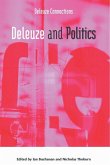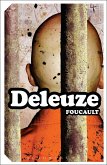Deleuze s film philosophy takes Italian neorealism as
the inaugural
moment of modern cinema: the cinema of the
time-image. Although
many see neorealism as innovative in terms of its
social content,
Deleuze emphasizes specific qualities of the
cinematic image in
neorealist films. Examining four exemplary neorealist
films by
Rossellini (Roma città aperta), De Sica (Ladri di
biciclette), Visconti
(Bellissima) and Fellini (Le notti di Cabiria), Kelso
illustrates and
explains why Deleuze sees this as such a pivotal
moment for the
cinema. In turn, Deleuze s philosophy allows one to
see these films
in a new light. From the perspective implied by a
philosophy of
becoming, the political and social agendas of
neorealist films are
not evaluated according to either their reflection of
given
historical/social realities or retrospective
judgements regarding the
efficacy of their politics. Instead, the political
and aesthetic import of
the films is shown to be a direct consequence of
their ability to
restructure perception and to revitalize thought,
even at the expense
of traditional modes of cinematic enunciation.
the inaugural
moment of modern cinema: the cinema of the
time-image. Although
many see neorealism as innovative in terms of its
social content,
Deleuze emphasizes specific qualities of the
cinematic image in
neorealist films. Examining four exemplary neorealist
films by
Rossellini (Roma città aperta), De Sica (Ladri di
biciclette), Visconti
(Bellissima) and Fellini (Le notti di Cabiria), Kelso
illustrates and
explains why Deleuze sees this as such a pivotal
moment for the
cinema. In turn, Deleuze s philosophy allows one to
see these films
in a new light. From the perspective implied by a
philosophy of
becoming, the political and social agendas of
neorealist films are
not evaluated according to either their reflection of
given
historical/social realities or retrospective
judgements regarding the
efficacy of their politics. Instead, the political
and aesthetic import of
the films is shown to be a direct consequence of
their ability to
restructure perception and to revitalize thought,
even at the expense
of traditional modes of cinematic enunciation.








